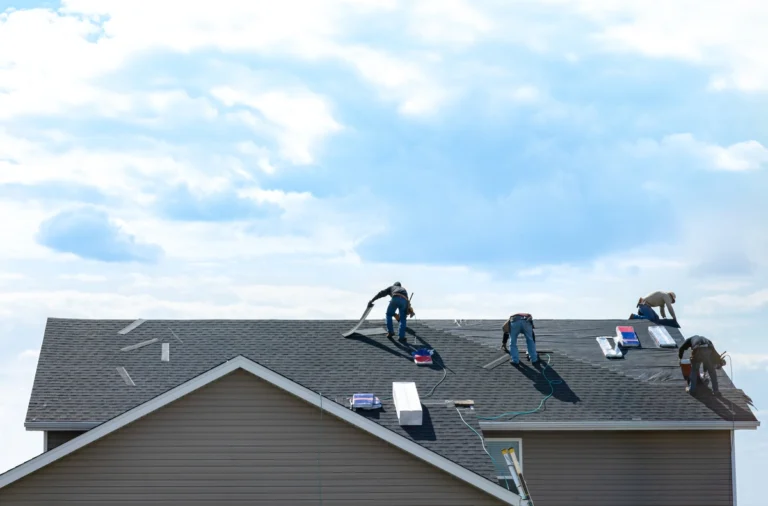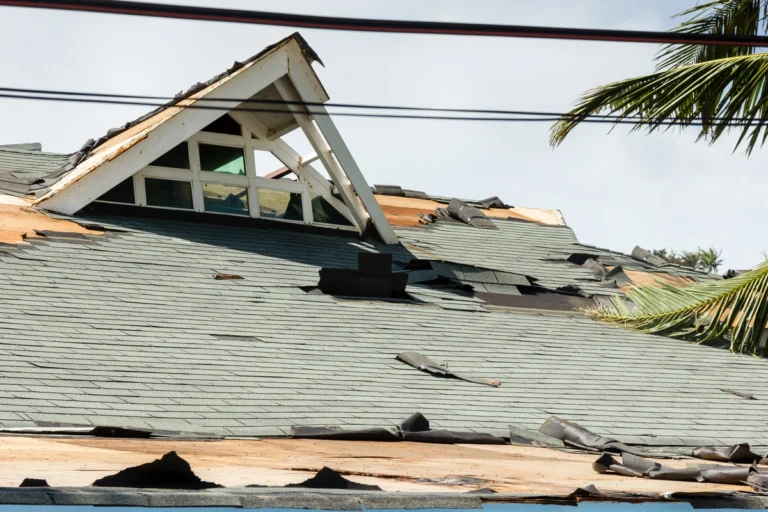Whether it’s for your residential or commercial roofing system, it’s crucial to take good care of your roof and to keep up with roof repair work. After all, as your property’s first line of defense, a roofing system can experience many issues, such as shingle blow-off, cracks or water infiltration. No matter how strong your roof may be, there’s no changing the fact that there’s no such thing as an invincible roof. In fact, it’s even possible for water to get through your water-resistant roof. But how exactly can this happen?
Here are six different ways water can find its way through your home’s roofing system.
- Driven by Wind Beneath the Shingles
One of the ways water can find its way through your roofing system is when rain is driven by wind to blow up beneath your eaves instead of falling to the ground. This can occur if the rain your area is experiencing is mixed with strong winds, and, once this happens, the rainwater can venture up under the eaves, past the drip edge flashing and slide between the shingles after damaging your fascia. If left unattended, the water can easily damage your roof deck, compromising the structural integrity of your roofing system in the process.
- Ice Dams
If you live in an area that experiences snow and ice during the winter season, it’s possible that ice dams may form on the edge of your roof if it isn’t properly insulated. If the ice dam grows large enough, it can hold a large amount of water in one place and if left unchecked, all that water can soak through your roofing materials and flood your attic. Like before, all that water can compromise your roof’s structural integrity and encourage the growth and spread of mold around your home. With that in mind, don’t hesitate to turn to a roofing expert to help you improve the insulation of your attic or increase the ventilation of your home to prevent ice dams from forming on your roof’s edge.
- Sneaking Around the Edges – A roofing material may be touted as waterproof by a residential or commercial roofing installer, but there are still plenty of ways for water to penetrate the material and damage it. For instance, if you don’t have a drip edge flashing installed, then any water that your roof catches could easily sneak around its lower edge and infiltrate your roofing system. Therefore, if you’re looking to prevent water from infiltrating your roof through the edges, be sure to have a drip edge flashing installed as soon as possible. Keep in mind, however, that your roof has other edges, such as skylights, dormers, chimneys and vents, and, as such, you’ll need to install special flashing in these areas to keep water out of your roof and your home.
- Pulled Through Shingles
On the other hand, if your roofing system has a somewhat low slope, water can pool on your roof long enough that gravity can begin pulling it through the shingles instead of falling to the ground. While this may sound like a problem for flat roofing systems, roofing experts say that this can also happen to the valleys of pitched roofs. With that in mind, be sure to ask an expert roofer to see if you need a special device that can help you divert water away from the low-sloped areas of your roofing system.
- Failed Flashing
According to commercial roofers, having failed flashing is another way water can make its way through your property’s roof, especially for commercial roofs with single-ply membranes. This is because as time goes by, the membranes can shrink, and, once they do, they can pull apart from the vertical flashing, providing an easy avenue for water to enter. As such, make it a point to ensure that your commercial roof and its flashing are properly installed to prevent water infiltration in the future.
- Imperfect Seams
Finally, if your commercial roof’s seams aren’t correctly formed, there’s a good chance water will get underneath your roofing membranes and cause a leak around your building. This is especially the case for single-ply membranes as they only have one layer to rely on compared to commercial roofs with multiple-ply membranes. With that in mind, spare no expense on the installation of your commercial roof, and only enlist the services of professionals who are experienced in installing your particular kind of roof.
How to Prevent Water From Infiltrating Your Roof
There are plenty of ways you can prevent water from infiltrating your roof apart from the previously mentioned methods. Apart from preventing ice dam formations and ensuring that your commercial roof’s seams are correctly formed, you can also prevent water from infiltrating your roof by having your roof inspected on a regular basis. That way, any form of damage that your roof has sustained for the past few months can be spotted and repaired by a trained eye before they become a larger problem.
Alternatively, experts also strongly recommend that you clean your gutters on a regular basis to prevent clogging and subsequent water infiltration on your roof. This is because if clogged gutters are left unattended, any runoff rainwater that it catches from the roof can accumulate and seep beneath the edges of your roof, infiltrating it and causing leaks in the process. By having your gutters cleaned every now and then, you can avoid this problem and protect your roof from major water damage.
Looking for someone who can help you maintain your roofing system? Don’t hesitate to turn to Bay Valley Contractors. Whether you need an expert to help you with a roofing or remodeling job, we are dedicated to providing quality work in a timely manner with no hidden costs. Give us a call at (925) 718-0780, or fill out our contact form to get in touch with us and schedule a FREE consultation today!





